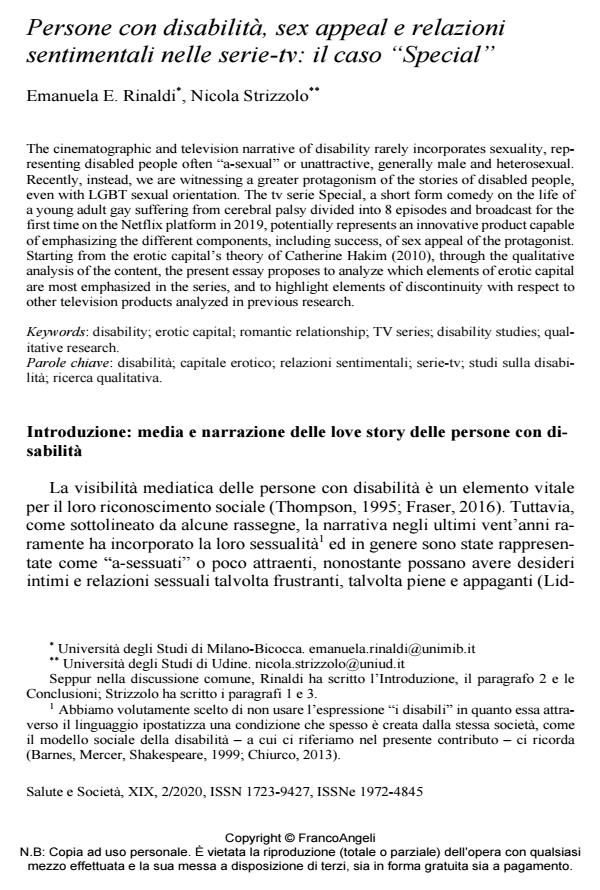Persone con disabilità, sex appeal e relazioni sentimentali nelle serie-tv: il caso "Special"
Journal title SALUTE E SOCIETÀ
Author/s Emanuela E. Rinaldi, Nicola Strizzolo
Publishing Year 2020 Issue 2020/2
Language Italian Pages 19 P. 72-89 File size 192 KB
DOI 10.3280/SES2020-002006
DOI is like a bar code for intellectual property: to have more infomation
click here
Below, you can see the article first page
If you want to buy this article in PDF format, you can do it, following the instructions to buy download credits

FrancoAngeli is member of Publishers International Linking Association, Inc (PILA), a not-for-profit association which run the CrossRef service enabling links to and from online scholarly content.
The cinematographic and television narrative of disability rarely incorporates sexuality, representingdisabled people often "a-sexual" or unattractive, generally male and heterosexual.Recently, instead, we are witnessing a greater protagonism of the stories of disabled people,even with LGBT sexual orientation. The tv serie Special, a short form comedy on the life ofa young adult gay suffering from cerebral palsy divided into 8 episodes and broadcast for thefirst time on the Netflix platform in 2019, potentially represents an innovative product capableof emphasizing the different components, including success, of sex appeal of the protagonist.Starting from the erotic capital’s theory of Catherine Hakim (2010), through the qualitativeanalysis of the content, the present essay proposes to analyze which elements of erotic capitalare most emphasized in the series, and to highlight elements of discontinuity with respect toother television products analyzed in previous research.Keywords: disability; erotic capital; romantic relationship; TV series; disability studies; qualitativeresearch.
Keywords: Disabilità; capitale erotico; relazioni sentimentali; serie-tv; studi sulla disabilità;ricerca qualitativa.
Emanuela E. Rinaldi, Nicola Strizzolo, Persone con disabilità, sex appeal e relazioni sentimentali nelle serie-tv: il caso "Special" in "SALUTE E SOCIETÀ" 2/2020, pp 72-89, DOI: 10.3280/SES2020-002006